It was evening on the Chobe River in Botswana, Africa. The day had been a good one, bursting at the seams with all manner of wildlife. We were in the final, golden hour of it, had our game faces on, and our cameras at the ready.
As our flat-bottom boat glided through the water, all eyes were glued to the shoreline with keen interest, seeking our next photographic victim.
Our guide received word there was a lion kill just a bit further up the river, so we decided to make our way there – with just a bit of urgency in the throttle. However, lion kills are funny things – sometimes you get the lion, sometimes you only get the carcass. Of course, sometimes you get both, but the lion is so obscured by vegetation that you might as well have not seen him at all.
We wanted a good lion and were more than willing to check it out. The thing was, our two previous lion encounters had come up significantly short, at least from a photographic standpoint. Still, it’s always cool to see lions, even if you don’t end up recording the moment on a memory card.
As we rounded the corner, we spotted a beached boat in the general area where our guide thought the lions were dining. It was a good sign. We opened the throttle and soon found our spot along the shoreline to watch the show.
As we peeked over the grass beyond the short embankment, we saw not one but two male lions and a pair of buffalo kills – an odd situation really, not sure why they took two at once and only a few meters apart. I’m sure there’s a story there – I only wish we would have been around to see it.
(OK, at this point, I know that you think I may have the wrong photo with this article, but hang tight.)
Luckily, our lions were more out in the open than in previous encounters – giving us the opportunity for much cleaner shots. I popped off a couple of photos with the 600mm and 1.4TC as the larger male gorged himself on buffalo – but, frankly, I’m not really into the whole blood and gore thing. I prefer more majestic poses for lions and can usually pass on the bloody, slobbery, drool-laden ones.
The good news was that after dinner, the two lions ended up lying side by side and giving us some beautiful poses. Shutters rattled like machine guns as the iPhone photographers in the next boat shot us odd, even startled, looks. We didn’t care – it was time to finally put some lions on the memory cards.
As our photographic onslaught raged on, our guide spotted a herd of elephants getting ready to cross the river. They were too distant for photos, but we were still close enough to observe their movements. Nevertheless, we persisted with the lions – after all, we had seen well over a hundred elephants along the river by this point in the trip.
Still…
As we continued to shoot and daylight drained from the sky, the action slowed a bit with the lions. My wife borrowed the binoculars from the guide and said, “Steve, I think you need to look at this!”
Since the lions were borderline napping, I took the binos and had a peek for myself. What I saw was painfully tempting. The river was deep and all the elephant heads poking out of the water looked epic. However, the light was getting low and dramatic, so I wasn’t quite ready to let these lions go. Thoughts of the big cats in sunset light are tough to tame.
We passed around the binoculars to the rest of our group and we all started feeling the pull – it really was an excellent opportunity. We also knew that when the elephants finished their crossing we’d almost certainly see some serious shaking and dusting going on.
After some back and forth discussion, we decided it was just too much to bear – the lions were great, but they were practically asleep. We couldn’t resist the elephants any longer!
And this is probably the greatest takeaway from that evening:
Although I normally don’t like leaving a wonderful animal in beautiful light, there are times you don’t want to cling to a good opportunity only to let a great opportunity pass you by. At the time, the elephants absolutely seemed like the better choice, and, for my part, I have no regrets. However, I do caution you not to take the wrong lesson from this. In my experience, most of the time sticking with a good subject is the right call. I see people walk away too soon all the time – and miss great shots as a result. My advice is only move on if you’re 100% sure the new opportunity really is better. However, when it is, go for it.
The motor roared to life, we backed out, and opened the throttle. I quickly set down the D850 and 600mm in favor of the D5 and 300 PF – mostly because I knew the 600mm was going to be longer than I wanted. However, it would turn out that the fast frame rate of the D5 was destined to be more of an asset than I ever thought at the time. (After all, how much speed do you think you need for an elephant? As it turns out, more than you may realize!)
In a matter of moments, we were on the scene photographing elephants as they crossed – and emerged from – the river. It was a photographic bonanza – every direction you pointed the glass there was something amazing to photograph. In fact, my shooting pattern was that of a soldier surrounded by enemy troops – I was rapidly firing in as many directions as possible. However, unlike the soldier, I had a massive grin on my face the entire time.
And that wasn’t the best of it.
As the sun touched the horizon, the elephants that had emerged from the water started taking “dust baths.” These dust baths help the elephants in a number of ways, including acting as a sunscreen, keeping them cooler, and keeping parasites at bay. I suppose they do it right after a swim since it “sticks” to the skin better.
Thus far, our shooting had been with the light to our back, but one look at the sky convinced us that we needed to be on the other side of these pachyderms!
So, our guide quickly repositioned the boat for silhouette shots against what was becoming one of the best skies of the trip.
As the bow touched the shoreline, the large male in the photograph below was preparing for his dust bath. Using single-point AF, I focused on his eye (it was easier to see than the silhouette suggests) – and then it happened. He pulled a bunch of sand with his trunk and drew a long arc as he brought the dust to his back.
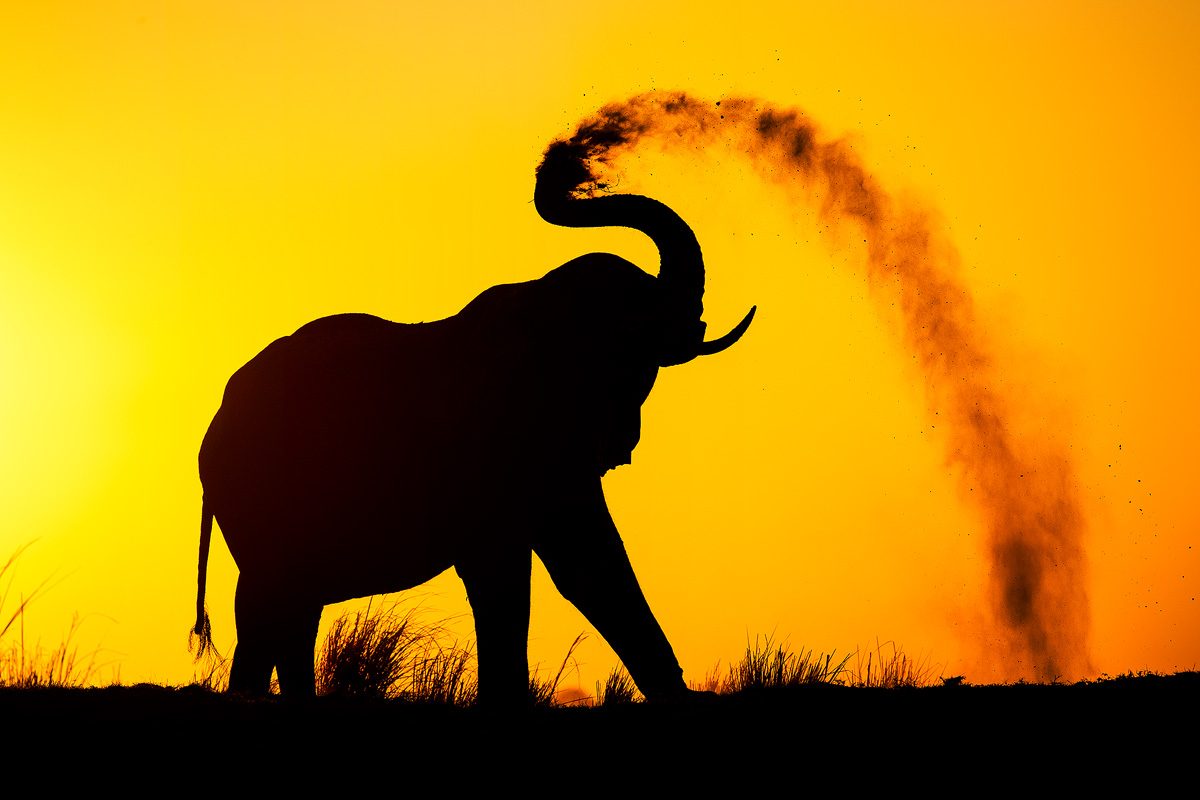
Fortunately, I had witnessed this “dusting” more than a few times and knew what to expect. (It pays to study and learn the behavior of your subjects!). I had the camera set to Matrix Metering, a shutter speed of 1/1600 to stop the action, and F/5.6 for enough depth of field with the 300mm to keep everything sharp (distance helped here too).
I only wish I would have had time to flip to full manual for metering the sky. Although to be fair, I probably would have missed the shot, as this image happened pretty much as we came into position. Sometimes, you gotta just shoot!
Still…Most of the time, I want to make the sky middle-toned in a situation like this and full manual metering works perfectly for it (I was in Manual + Auto ISO). The problem here is that Matrix Metering places a fairly heavy bias on what’s under the AF point when in single-point AF. Most of the time, this is a very good thing; however, in this case, it allowed for a bit more exposure than I really wanted. The good news was that it was still within the dynamic range of the sensor with no areas clipped, so I was able to bring the brightness down to where it should have been. Yet another reason to always shoot RAW!
By the way, for more info on how to handle tricky exposure situations like this, check out my book, Secrets To Exposure And Metering For Nikon. It thoroughly covers all the topics from the last paragraph – and a whole lot more!
At any rate, as his trunk lifted, I held down the shutter release like my life depended on it. After it was over, I took my eye from the viewfinder, drew in a deep breath, and dangled the camera next to my hip.
“I can’t believe that just happened! I think I can go home now!”
Although photographic opportunities still abounded, I couldn’t resist taking a few seconds to glance at the back of the screen. I was glad to have 12 FPS at my disposal! While I had quite a few good shots, I felt the one accompanying this article was a real standout – a perfect moment. (See this article for all the reasons frame rates matter.)
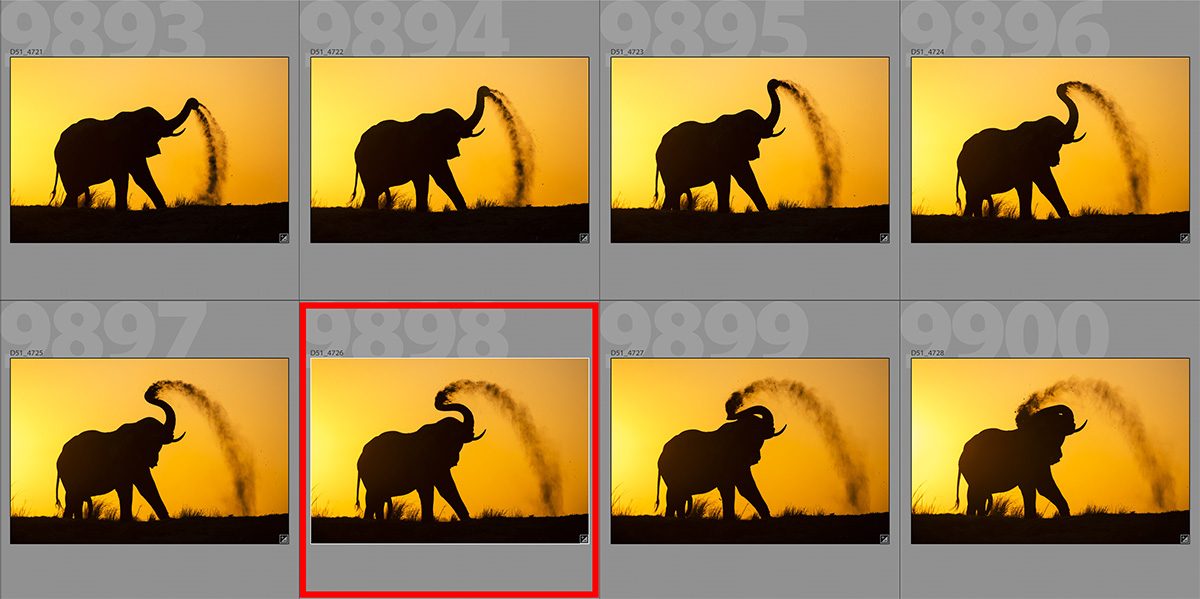
Anyway, it wasn’t long before the color faded from the sky and the evening air took on a chill. We turned our little photo boat back towards the houseboat where we were staying, laughing and joking all the way. Overall, I think this turned out to be one of my favorite images from the trip.
By the way, to see my Botswana gallery and all my currently processed images from this trip, check out this link.
PS – If you enjoyed this post, I think you’ll REALLY like my e-books and video workshops! Thousands of pages and hours of videos filled with tips, tricks, and techniques – all my best content! Check ’em out – click here (hey, it’s free to look).

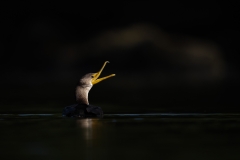
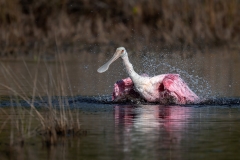
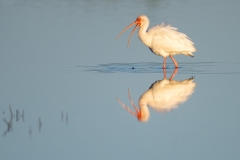
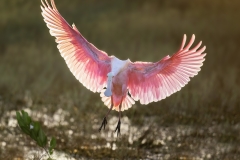
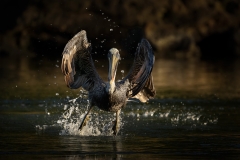
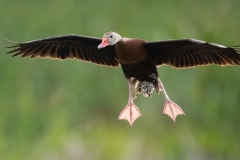

I’m retired and trying photography as a hobby. I’ve downloaded your Wildlife Photography book and have watched most of your videos. Your straight up, common sense approach appeals to me.
In reviewing your information about How I Got The Shot, one aspect of the photo that I would find very beneficial would be the physical distance to the subject.
With that piece of information all the settings, along with choice of lens, would help me in grasping wildlife photography.
Thank you for your consideration.
Jack Korri
It’s rare, in my view, to come across a photographer of excellence whose narrative meets the high standard or her or her images. Great job Mr Perry.
Enjoyed the Bots pics Steve as it’s close to home and I just had two weeks at Hwange Reserve right next door. Helped with the annual animal count (50th anniversary this year) and as usual saw hundreds of elephant. In the 24hour count period we had nearly 500 at the waterhole we were allocated. There is an influx of Ellie’s from Botswana, where water is low into Hwange where a lot of pans have pumped borehole water. Count this year of elephant moved from a norm of 25 to 30 thousand to an early provisional of 42 thousand. And it’s… Read more »
Thanks for the virtual trip Steve. Your articles boosts my passion for photography… keep it up… for you and for us….
Thanks for the terrific explanation Steve. I’ll be there next August and hope to capture some great photographs. I just bought a D850 to go with my D750 so my girlfriend and I will both be using some great Nikon equipment. I’ll be taking the 200-500 and Maree will have the kit 24-120 that came with the D750. I’ll also have the 1.4TC with me just in case I need more range.
Here’s hoping!
Oh, and thanks for the free update for the Secrets To Exposure And Metering for Nikon. Such a great book!
Cheers
Terry
Amazing series Steve
Including the Elephant! 🙂
I can only but dream
………………Gary
Australia
Wow, great description and that is an awesome shot.
I was there in June 2010. Damn I want to go Back
Botswana and especially The Chobe River have been on my with list for sometime, now I see this. Absolutely amazing, especially with all the detail Steve brings.
Cool story,would like to see the lions as well. I would choose #5 of the ele’s, really amazing shots you got there 🙂
A fantastic story Steve and absolutely amazing photographs. Thank you for sharing.
Amazing shots Steve. Can´t describe what I felt. It looked like I was there in the wild!
Wonderful photos from a gorgeous place!
Thank you 🙂
What a great story and photo to match! I loved the photos in the gallery as well.
Thanks so much 🙂
Ho visitato la tua galleria del Botswana e ti faccio i complimenti per le foto veramente belle che hai scattato.
Un saluto
Massimo (Felino, Parma, Italia)
Thanks!!
So are you going to lead a trip to Botswana?
Yup – and former CR participants (like you) get first dibs 🙂
Ya gave us all the dirt in this story ! Love It !
LOL I see what you did there 😀
Hey Steve, I didn’t know you were in Botswana. I was also there in September, visiting Khwai, Savute and Chobe. It’s a wonderful place for safaris. I’m definitely going back in 2021. Great photos in the Gallery!
Thanks 🙂 We’re going back for sure in both 2020 and 2021 for workshops. So many opportunities. We were only there on a short safari and still managed to see a ton of stuff.
Hi Steve, Do you know when the Botswana dates will be made available for 2020 and 2021? Thanks.
Totally awesome image, Steve, along with your stellar gallery of photographs taken in Botswana. Thanks for sharing!
Thanks!!
I remember asking myself over and over again, “Did that really just happen?!?” Everything came together perfectly in a split second.
Yup, we got lucky that evening – one of the best moments of the trip!
You definitely got the better angle! I checked mine when I saw yours — of course! I’ve got him at a bit of an angle. I like yours better!
I’ll sell you a copy 😀
Great shot(s) Steve !
Thanks!
Love Botswana of the 4 African countries visited so far Botswana is the best. Congrats on a magnificent photo.
It’s my current favorite as well, although lots more to explore!
Terrific article. I feel like I was right there with you looking over your shoulder.
Hey – I thought that was you behind me when I shot it!!
incredible….
Thanks 🙂